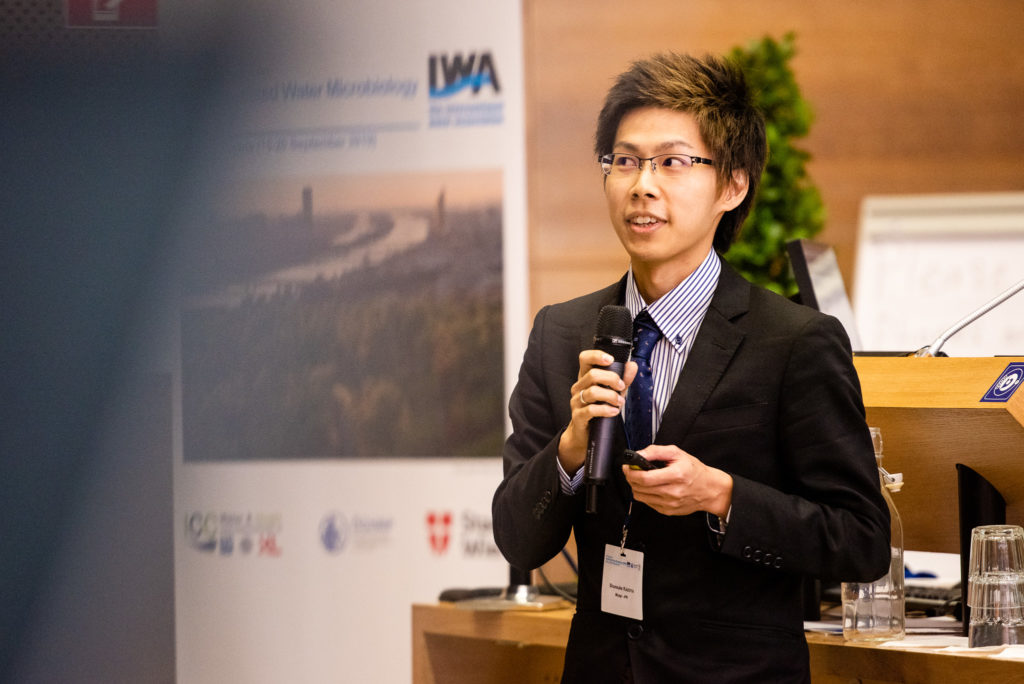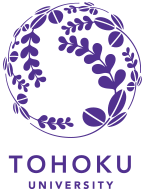Syun-suke KADOYA, JSPS Research Fellow (DC2)

- TEL:+81-
- FAX:+81-
- e-mail:
Research Topics
- Chlorine disinfection sensitivity of rotavirus
- Quantitative microbial risk of Legionella pneumophila in decentralized water systems
- Predictive inactivation models of waterborne viruses using Bayesian modeling and/or machine learning algorithms
- Infectious disease modeling to estimate water-intervention effects
Research Abstract
1. Chlorine disinfection sensitivity of rotavirus
Rotavirus causes severe diarrhea in infants through fecal-oral route, and its outbreak has still occurred both in developed and developing countries in spite of vaccine introductions and the improved hygiene. Disinfection for hygiene improvement is widely employed for water treatment, but rotavirus can have strategy to escape disinfection pressures due to higher mutation rate, which can be a cause of rotavirus propagation. In this study, we try to test the change in chlorine sensitivity of rotavirus and elucidate population genetic factors for chlorine sensitivity change.
2. Quantitative microbial risk of Legionella pneumophila in decentralized water systems
Developed countries have problem about a maintenance of water supply system in depopulated areas. A household-installed water treatment system makes it possible to establish a sustainable water supply in depopulated areas, but health risks of consumers need to be controlled since the source water quality is not always adequate for domestic use of water. To protect human health, we try to calculate the microbial risks of pathogens and chemical risk of disinfection byproducts following QMRA framework, and then proposed the proper maintenance of the household-installed water treatment system to satisfy the acceptable level of risk.
3. Predictive inactivation models of waterborne viruses using Bayesian modeling and/or machine learning algorithms
The reuse of wastewater is useful to solve water scarcity all over the world. Since wastewater includes hazardous contaminants such as waterborne viruses, human health risks should be maintained at acceptable level by appropriately treating wastewater by disinfection. Disinfection intensity, which determines virus log reduction value, should be monitored in real-time and recorded in order to maintain virus concentration in effluent from wastewater treatment plant (WWTP), but different water quality parameters among WWTPs make it difficult to predict virus LRV by disinfectants. In this study, we’ll apply Bayesian estimation and/or machine learning algorithms to a construction of LRV prediction models by using water quality parameters as explanatory variables.
4. Infectious disease modeling to estimate water-intervention effects
Pathogenic RNA viruses (e.g. norovirus, rotavirus and SARS-Coronavirus-2) impose human on vast disease burden in the world. To prevent virus spreads, interventions such as vaccine introduction and disinfection have been implemented. Infectious disease model using simultaneous ordinary differential equations can be employed to estimate intervention effects on the number of infective people. Although vaccination efficacy has been estimated in a lot of reports, the effect of water-intervention has been unraveled yet. Also, the cause that virus outbreaks still occurred can be associated with virus evolution. So, we try to establish novel infectious disease model to estimate water-intervention effect with virus evolution.
Academic Background
| March 2016 | Environmental Engineering Course, School of Engineering, Hokkaido University |
|---|---|
| March 2018 | Division of Environmental Engineering, Graduate School of Engineering, Hokkaido University |
Honors
- September 2018: Full Travel Grant Award, 13th International dsRNA Virus Symposium
- August 2017: Excellent presentation award, Environmental Virology Symposium 2017
- March 2016: Hokkaido University Clark Award
Research Articles
- Predictive water virology using regularized regression analyses for projecting virus inactivation efficiency in ozone disinfection
Syun-suke Kadoya, Osamu Nishimura, Hiroyuki Kato, Daisuke Sano
Water Research X, May 2021, 11, 100093. - Hierarchical Bayesian modeling for predictive environmental microbiology toward a safe use of human excreta: Systematic review and meta-analysis
Wakana Oishi, Syun-suke Kadoya, Osamu Nishimura, Joan B. Rose, Daisuke Sano
Journal of Environmental Management, April 2021, 284, 112088. - Regularized regression analysis for the prediction of virus inactivation efficiency by chloramine disinfection
Syun-suke Kadoya, Osamu Nishimura, Hiroyuki Kato, Daisuke Sano
Environmental Science: Water Research & Technology, 2020, 6, 3341-3350. - Bottleneck size-dependent changes in the genetic diversity and specific growth rate of a rotavirus A strain
Syun-suke Kadoya, Syun-ichi Urayama, Takuro Nunoura, Masaaki Kitajima, Toyoko Nakagomi, Osamu Nakagomi, Satoshi Okabe, Osamu Nishimura, Daisuke Sano
Journal of Virology, May 2020, 94(10), e02083-19. -
Syun-suke Kadoya, Osamu Nishimura, Hiroyuki Kato, Daisuke SanoWater, October 2019, 11(10), 2187.
- Sign-constrained linear regression for prediction of microbe concentration based on water quality datasets
Tsuyoshi Kato, Ayano Kobayashi, Wakana Oishi, Syun-suke Kadoya, Satoshi Okabe, Naoya Ohta, Mohan Amarasiri, Daisuke Sano
Journal of Water and Health, June 2019, 17(3), 404-415. - Assays for specific growth rate and cell-binding ability of rotavirus
Syun-suke Kadoya, Daisuke Sano
Journal of Visualized Experiments, January 2019, 143, e58821. - Selection of cellular genetic markers for the detection of infectious poliovirus
Daisuke Sano, Megumi Tazawa, Manami Inaba, Syunsuke Kadoya, Ryosuke Watanabe, Takayuki Miura, Masaaki Kitajima, Satoshi Okabe
Journal of Applied Microbiology, April 2018, 124(4), 1001–1007. - Sapovirus in wastewater treatment plants in Tunisia: Prevalence, removal, and genetic characterization
Miguel Varela, Imen Ouardani, Tsuyoshi Kato, Syunsuke Kadoya, Mahjoub Aouni, Daisuke Sano, Jesús Romalde
Applied and Environmental Microbiology, March 2018, 84(6), e02093-17. - Identification of the inactivating factors and mechanisms exerted on MS2 coliphage in concentrated synthetic urine
Wakana Oishi, Daisuke Sano, Loic Decrey, Syunsuke Kadoya, Tamar Kohn, Naoyuki Funamizu
Science of the Total Environment, November 2017, 598, 213-219.
Other Articles
TBD
Conference Presentation
- Genetic diversity and free chlorine susceptibility of a rotavirus A strain
Syn-suke Kadoya
Interdisciplinary seminar on mucosal immunology at Tohoku University 2020
Feb. 19, 2020, Espace, Tohoku University Katahira Campus, Sendai, Japan - Predictive Water Virology: Hierarchical Bayesian Modelling for Estimating Virus Inactivation Efficiency (poster presentation)
Daisuke Sano, Syun‐suke Kadoya
20th IWA Symposium on Health Related Water Microbiology
Sep 15-20, 2019, Vienna, Austria - Free chlorine Sensitivity of Rotavirus Exposed to Repeated Disinfection and Bottleneck Events
Syun‐suke Kadoya, Syun‐ichi Urayama, Takuro Nunoura, Masaaki Kitajima, Toyoko Nakagomi, Osamu Nakagomi, Satoshi Okabe, Osamu Nishimura, Daisuke Sano
20th IWA Symposium on Health Related Water Microbiology
Sep 15-20, 2019, Vienna, Austria - Neutral Evolutionary Rate of Rhesus Rotavirus
Syun-suke Kadoya, Syun-ichi Urayama, Takuro Nunoura, Masaaki Kitajima, Satoshi Okabe, Toyoko Nakagomi, Osamu Nakagomi, Daisuke Sano
13th International dsRNA Virus Symposium
Sep. 24-28, 2018, Houffalize, Belgium
Members
Professor
Associate Professor
Assistant Professor
Post-Doc
Special Research Student
Ph.D.Students
- Yu-bing LI
- Sewwandi BANDARA
- Aken Puti WANGUYUN
- Katayoun AMIRFARD
- Mohammadreza VESALINASEH
- Yohei MIURA
- Luyao Wang
Master Students
- Marcus SANCHEZ
- Jarin TASNIM
- Lucas MARIJANOVIC
- Anju SAWADA
- Ren SUZUKI
- YiLei WANG
- Kanki WATANABE
- Riki MORIYASU
- Syoya TANAKA
- Tatsunoshin WAKINO
- Putri Shafa Kamila
